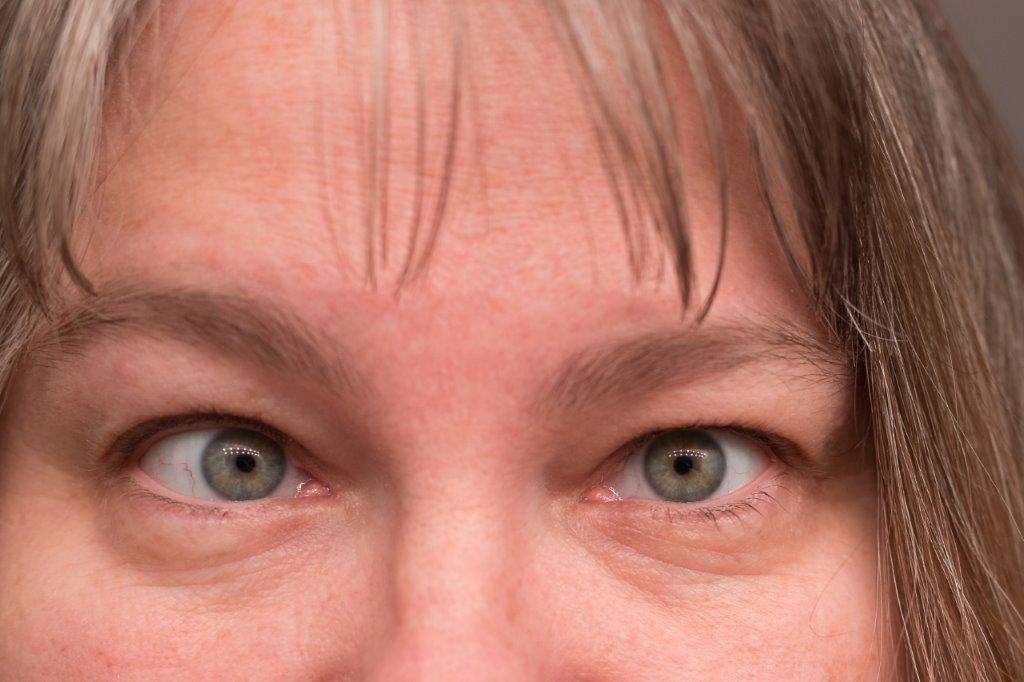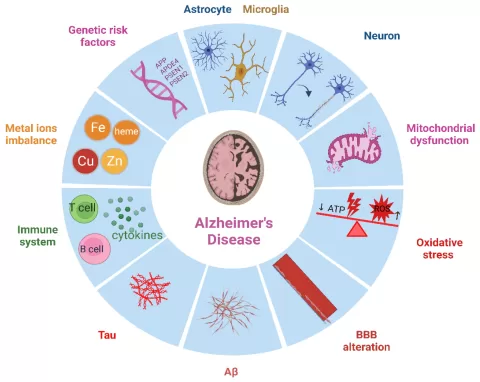Lazy eye, medically referred to as amblyopia, is a prevalent visual disorder that primarily affects children, leading to significant challenges in vision development. This condition occurs when one eye fails to achieve normal visual acuity, even with corrective lenses, resulting in a reliance on the other eye. The causes of lazy eye can vary, including strabismus, refractive errors, and ptosis, which all hinder effective vision. Understanding the amblyopia symptoms is crucial for early lazy eye detection, as timely intervention can significantly improve outcomes. In recent years, lazy eye treatment options have expanded, including innovative digital therapy for lazy eye that harnesses technology to enhance visual function, offering hope for many affected children.
Amblyopia, often described as a vision development disorder, poses a significant challenge for many children as it can lead to lifelong visual impairments if left untreated. This condition, frequently referred to as a “wandering eye,” involves one eye developing weak vision due to various factors such as misalignment or significant differences in visual acuity between the two eyes. Recognizing the symptoms of amblyopia is essential for parents and caregivers, as early lazy eye detection can prompt necessary interventions. Treatment approaches have evolved, with a range of options now available, including traditional methods and emerging digital therapies. Understanding the underlying causes of lazy eye is key to developing effective lazy eye treatment strategies that can restore balance to a child’s vision.
Understanding the Causes of Lazy Eye
Lazy eye, or amblyopia, can be attributed to several underlying causes that affect visual development. One of the most common causes is strabismus, which refers to the misalignment of the eyes. When one eye turns inwards or outwards, the brain tends to favor the aligned eye, leading to reduced vision in the misaligned eye. This miscommunication between the eyes and the brain develops early in childhood, often before the age of 7, making early detection essential to prevent permanent vision loss.
Another notable cause is refractive errors, where significant differences in vision between the two eyes can lead to amblyopia. For example, if one eye is significantly nearsighted or farsighted compared to the other, the brain may ignore the weaker eye, exacerbating the vision disparity. Additionally, conditions such as ptosis, or drooping eyelids, can obstruct vision in one eye, further contributing to the development of lazy eye.
Understanding the causes of lazy eye is crucial for implementing effective treatment strategies. If a child is diagnosed with strabismus or major refractive errors, early intervention can help realign the eyes or improve vision discrepancies. Parents should be vigilant about their children’s visual behaviors, such as difficulty focusing or tracking moving objects, as these can be indicators of amblyopia. Seeking professional eye examinations can aid in the timely identification of these issues, facilitating prompt treatment.
Recognizing Lazy Eye Symptoms
The symptoms of lazy eye can manifest in various ways, and recognizing them early can make a significant difference in treatment outcomes. One of the most noticeable symptoms is blurred vision in the affected eye, which may not be correctable with glasses or contact lenses. Children may also exhibit poor depth perception, making it difficult for them to judge distances accurately. This can impact their ability to engage in activities that require visual coordination, such as sports or reading.
Another common symptom is difficulty tracking moving objects. Children with lazy eye may struggle to follow a ball or other fast-moving items, often relying on only one eye for visual input. Additionally, a wandering eye, known as strabismus, can be a prominent sign. Parents should be aware that if they notice their child’s eye frequently turning inward or outward, it could indicate the presence of lazy eye and warrant professional evaluation.
Identifying these symptoms early is crucial for effective lazy eye treatment. If parents observe any of these signs, they should consult an eye care professional as soon as possible. Timely diagnosis allows for interventions that can help the brain re-establish proper vision pathways. It’s important to remember that amblyopia can lead to significant visual impairment if left untreated, so proactive monitoring of children’s vision is essential.
Exploring Lazy Eye Treatment Options
Treatment options for lazy eye have evolved significantly, incorporating both traditional methods and innovative approaches. The most common conventional treatments include patching, where the stronger eye is covered to encourage the use of the weaker eye. This method stimulates the brain to strengthen the visual connections of the affected eye. Additionally, atropine drops can be used to temporarily blur the vision in the stronger eye, promoting reliance on the weaker eye for visual tasks.
In recent years, digital therapy has emerged as a promising alternative for lazy eye treatment. Clinical trials, such as those conducted for Luminopia’s digital therapy, have shown that technology can enhance visual input to the brain, providing a more engaging and effective method for treating amblyopia. This innovative approach not only captures children’s attention but also optimizes their visual development in a fun and interactive way.
The choice of treatment will depend on the age of the child, the severity of the amblyopia, and the underlying causes. While patching and atropine drops have been staples in amblyopia management, digital therapies represent a significant advancement in the field. Parents are encouraged to discuss all available options with their child’s eye care provider to determine the best course of action. Staying informed about new treatment developments can empower families to make decisions that will enhance their child’s visual health.
The Importance of Early Detection in Lazy Eye
Early detection of lazy eye is critical for effective treatment and positive outcomes. Experts recommend that children undergo comprehensive eye exams before the age of 7, as this is when the brain’s plasticity allows for the best chance of correcting vision problems. If amblyopia is identified early, treatments such as patching or digital therapy can be initiated promptly, significantly improving the odds of restoring normal vision.
Parents play a vital role in monitoring their children’s vision. They should be aware of any signs of visual impairment and seek professional evaluation if concerns arise. Regular eye check-ups, especially for children with risk factors such as family history of amblyopia or strabismus, can facilitate early diagnosis and intervention.
Understanding the urgency of early detection can help to mitigate the risk of long-term vision issues. Research shows that untreated lazy eye can lead to permanent vision loss, which underscores the importance of vigilance in monitoring children’s eye health. By fostering an environment of awareness and proactive care, parents can significantly enhance their child’s chances of overcoming amblyopia and achieving optimal visual development.
Recent Developments in Lazy Eye Treatment
The landscape of lazy eye treatment has seen significant advancements in recent years, particularly with the introduction of digital therapies. Clinical trials have demonstrated that these innovative solutions can outperform traditional methods, providing a fresh perspective on amblyopia management. For instance, digital platforms like Luminopia utilize engaging visual stimuli to promote the use of the weaker eye, resulting in improved visual acuity and depth perception among young patients.
In addition to digital therapies, ongoing research continues to explore new methodologies for lazy eye treatment. The increasing awareness and understanding of amblyopia among healthcare professionals have spurred interest in developing more effective and enjoyable treatment options. This is crucial not only for improving patient outcomes but also for encouraging adherence to treatment protocols, which can be a challenge with conventional methods.
Moreover, raising public awareness about lazy eye is essential for early detection and intervention. Campaigns aimed at educating parents about the causes and symptoms of amblyopia can foster a better understanding of this condition and its implications. With an emphasis on early screening and innovative treatment options, the future of lazy eye management is becoming increasingly optimistic, offering hope for children diagnosed with amblyopia.
Frequently Asked Questions
What are the common amblyopia symptoms associated with lazy eye?
Common amblyopia symptoms include blurred vision in the affected eye, poor depth perception, difficulty tracking moving objects, and a wandering eye (strabismus). Early detection of these lazy eye symptoms is crucial for effective treatment.
What are the primary causes of lazy eye in children?
The primary causes of lazy eye, or amblyopia, include strabismus (misalignment of the eyes), significant refractive errors (differences in vision between the eyes), and ptosis (drooping eyelid). Understanding these causes can aid in the early detection of lazy eye.
What treatment options are available for lazy eye?
Treatment options for lazy eye include digital therapy, patching the stronger eye, using atropine drops to blur vision in the stronger eye, and corrective glasses or surgery for underlying issues. Early intervention is key to improving outcomes for amblyopia.
How is lazy eye detected in children?
Lazy eye detection typically involves a comprehensive eye examination by a pediatric ophthalmologist. Parents should look for signs of amblyopia symptoms, such as difficulties with visual tasks or noticeable misalignment of the eyes, and seek evaluation if concerns arise.
What role does digital therapy play in lazy eye treatment?
Digital therapy is an innovative approach to lazy eye treatment, utilizing technology to provide visual stimulation to the weaker eye. Clinical trials, such as those conducted with Luminopia’s digital therapy, have shown promising results in enhancing visual outcomes for children with amblyopia.
| Key Points | Details |
|---|---|
| Definition of Lazy Eye | Lazy eye, or amblyopia, is a vision development disorder where one eye has reduced vision that is not correctable by glasses or contact lenses. |
| Causes | 1. Strabismus (misalignment of the eyes) 2. Refractive errors (significant vision differences) 3. Ptosis (drooping eyelid) |
| Symptoms | – Blurred vision – Poor depth perception – Difficulty tracking objects – Wandering eye (strabismus) |
| Treatment Options | 1. Digital therapeutics (e.g., Luminopia) 2. Patching (covering the stronger eye) 3. Atropine drops (blurring the stronger eye) 4. Corrective glasses or surgery for underlying issues |
| Importance of Early Detection | Early detection and treatment are crucial, ideally before age 7, to correct vision issues effectively and prevent permanent vision loss. |
| Recent Developments | – Digital therapy in clinical trials shows promise – Increased public awareness regarding lazy eye and its treatment options |
Summary
Lazy eye, also known as amblyopia, is a significant visual disorder primarily affecting children, which can have substantial implications for their overall development if not addressed early. Understanding its causes, such as strabismus, refractive errors, and ptosis, along with recognizing symptoms like blurred vision and poor depth perception, is essential for parents. Fortunately, there are effective treatment options ranging from traditional methods like patching and atropine drops to innovative digital therapies currently in clinical trials. Early detection is crucial, as timely intervention can optimize treatment outcomes and enhance the quality of life for children with lazy eye. By raising awareness and encouraging proactive vision screening, we can help ensure that children receive the care they need to thrive.
The content provided on this blog (e.g., symptom descriptions, health tips, or general advice) is for informational purposes only and is not a substitute for professional medical advice, diagnosis, or treatment. Always seek the guidance of your physician or other qualified healthcare provider with any questions you may have regarding a medical condition. Never disregard professional medical advice or delay seeking it because of something you have read on this website. If you believe you may have a medical emergency, call your doctor or emergency services immediately. Reliance on any information provided by this blog is solely at your own risk.







